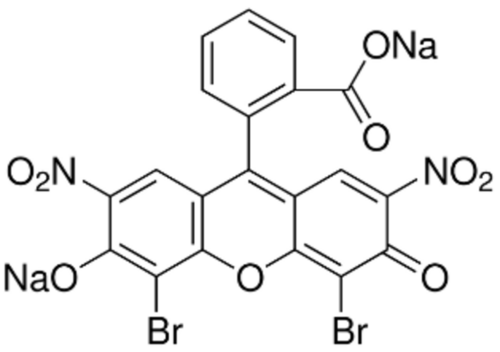Nile Blue Sulphate
Product Details:
- Molecular Weight 732.84gm/mole GSM (gm/2)
- Molecular Formula C40H40N6O6S
- CAS No 3625-57-8
- Click to View more
Nile Blue Sulphate Price And Quantity
- 8000.00 - 9000.00 INR/Container
- 1 Container
- 8000 INR/Container
Nile Blue Sulphate Product Specifications
- 732.84gm/mole GSM (gm/2)
- C40H40N6O6S
- 3625-57-8
Nile Blue Sulphate Trade Information
- Cheque
- 25 Container Per Week
- 15 Days
- 1-25kg in drum
- All India
Product Description
Applications:
Nile blue A is a satisfactory stain for PHB granules in bacteria. Poly-p3-hydroxybutyrate granules exhibits a strong orange fluorescence when stained with Nile blue A. Nile blue A appears to stain many more PHB granules than Sudan black B does and is not as easily ished from the cell by decolorization procedures[1]. Nile blue A is used as a stain for polyhydroxyalkanoic acid-accumulating microorganisms or to detect polyhydroxyalkanoic acids in microorganisms. Escherichia coli cells that do not accumulate detectable polyhydroxyalkanoic acids can be stained with Nile blue A and that this staining is sufficient for identifying these cells in fluorescence-activated cell sorting (FACS) experiments. Nile blue A staining does not affect either surface display of peptides or specific labeling of these peptides by a second fluorescence. Staining E. coli for flow cytometry using Nile blue A is an easy-to-handle and low-cost alternative to other fluorescent dyes or the intracellular expression of, for example, green fluorescent protein[2]. Nile blue A is one of the most studied benzophenoxazine dyes, as a potent photosensitizer for photodynamic therapy. The dye when administered intravenously disperses throughout the body by circulating through blood and is taken up by most cells that emphasize its interaction with various biomolecule[3].
Product details
|
CAS Number |
3625-57-8 |
|
Grade |
Reagent |
|
Packaging Type |
Drum |
|
Packaging Size |
25kg |
|
Form |
Powder |
- Product : Nile Blue Sulphate
- C.A.S. No. : 3625-57-8
- CI No : 51180
- M.F. : C40H40N6O6S
- M.W. : 732.84gm/mole
|
Dye Content (by Spectrophotometry) |
>90% |
|
Solubility 0.1% (50% EtOH) |
Clear solution |
|
Absorption maximum (50% EtOH) max |
633-639nm |
|
Absorptivity (A1%/1cm in 50% EtOH, at max) |
>1630 |
|
Loss On Drying (110 C) |
<8% |

Price:
- 50
- 100
- 200
- 250
- 500
- 1000+
Other Products in 'Lab Reagents' category
 |
KARAN LABORATES
All Rights Reserved.(Terms of Use) Developed and Managed by Infocom Network Private Limited. |

















